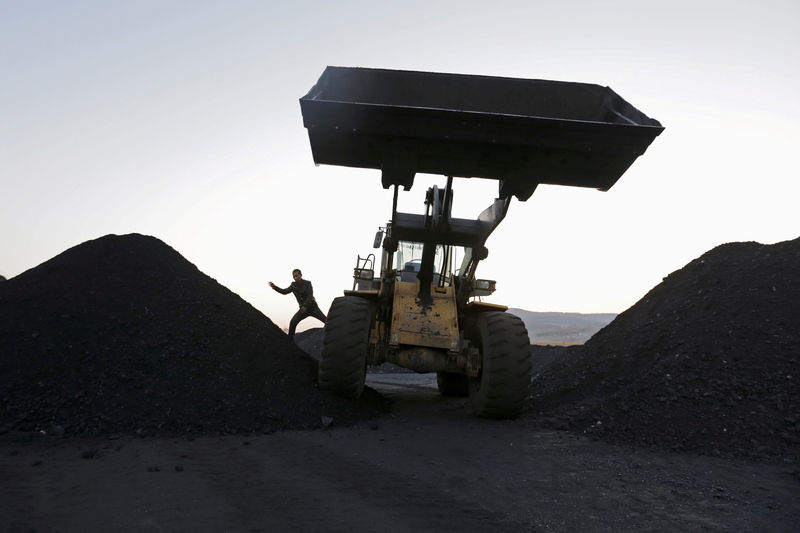(The opinions expressed here are those of the author, a columnist for Reuters.)
By Clyde Russell
LAUNCESTON, Australia, Nov 8 (Reuters) - China's future use of polluting coal for electricity shows the difficulty of dealing with news that presents multiple facts, thus allowing some to be highlighted over others.
The National Energy Administration (NEA) announced on Monday its latest five-year plan for China's power market, and the anticipated mix of generation capacity.
The relevant facts for coal: that China aims to cap total generation at 1,100 gigawatts (GW) by 2020, which is 14.6-percent higher than the previous plan that aimed to limit coal generation to 960 GW. comes the interpretation part.
This is either a looming environmental disaster as it means the world's largest producer and consumer of coal intends to use more of the fuel that plays a significant role in causing climate change.
Alternatively, this is actually good news as it means China will be using a smaller share of coal in its generation mix, with coal-fired capacity dropping to 55 percent of the total by 2020 from the previous five-year plan's target of 64.4 percent by 2015.
To illustrate the difficulty in picking what to highlight, look at the media coverage.
"China doubles down on coal despite climate pledge," was the headline in the Wall Street Journal.
"China to cap coal use at 55 percent of total power," said the South China Morning Post, with Reuters having a virtually identical headline. the Journal's headline is more emotive, it's not inaccurate and is backed up by the fact that China will still get the majority of its electricity from coal in 2020.
But the Journal's headline also ignores the very real decline in coal's share of China's power generation, which is no doubt a positive step.
China's total electricity capacity is expected to rise 34 percent to 2,000 gigawatts by 2020 from 1,490 under the previous five-year plan, with power consumption gaining by as much as 17 percent to 7.2 trillion kilowatt hours from 6.15 trillion before.
The large difference between growth in installed capacity and forecast consumption is largely because of the huge increases in renewables, which, owing to their less consistent output, require more spare capacity.
The NEA expects solar power to leap a massive 424 percent to 110 GW by 2020, while wind is slated for a 110-percent rise to 210 GW.
These increases far outweigh the other less polluting ways of generation power, with conventional hydro power expected to gain 17 percent to 340 GW and nuclear to rise 45 percent to 58 GW.
INCREASING ROLE FOR NATURAL GAS
Almost unnoticed amid the focus on coal is China's plan to lift natural gas-fired generation capacity to 110 GW by 2020, almost double the previous plan's 56 GW.
This bodes well for increasing natural gas demand in China, with the associated positive implications for producers of liquefied natural gas (LNG), who have seen prices weaken as a surge of new supply arrives from Australia and the United States.
Overall, it's likely that environmentalists will decry the plan to increase coal generation, saying Beijing isn't doing all it can to switch to renewables and help meet global emissions goals.
However, the reality for coal use may be somewhat different to the targets, as China is already building, or has approved, more coal-fired generation than will be allowed by the 2020 plan.
This means China will have to curtail building coal plants and retire older ones in order to stay within the 1,100 GW cap imposed by the plan.
In some ways, it will be a better environmental outcome if China does build plants and close older ones as the new units tend to use more efficient boilers and thus use less coal to generate the same amount of electricity as older power plants.
The other key to limiting coal use in China is to try and eliminate it altogether from heating residential buildings in cities and in industries other than steel and cement, where it is still essential.
Replacing central heating systems with natural gas boilers would go some way to reducing overall coal use and improve the air quality in major cities in winter.
While China probably could do more with its power generation sector, this is only one part of efforts to reduce pollution, and the others shouldn't be ignored. (Editing by Joseph Radford)
